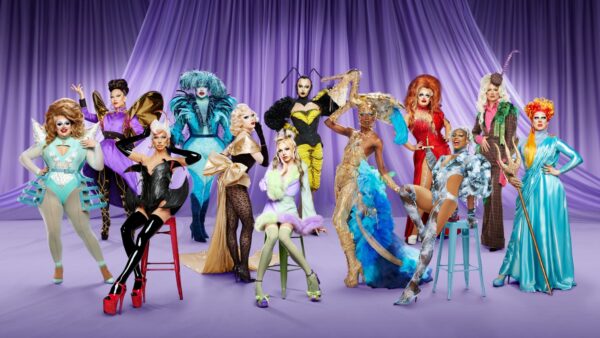Researchers have spent months analysing more than a million tweets, thousands of newspaper and magazine articles, and countless items of user-generated content in an attempt to discover what makes RuPaul’s Drag Race such a success.
On top of watching every episode of the pop-culture juggernaut, the team of Mario Campana, Katherine Duffy and Maria Rita Micheli trawled through social media comments and user-generated content, such as online glossaries of drag queen lingo.
Now, in a new paper they have described how the show has reached mainstream success by turning the stigma of drag on its head. Rather than ‘coping’ with stigma or hiding it, it has ‘spectacularised’ it to a mainstream audience, helping to develop visibility for marginalised individuals and normalising the practices that are usually associated with the transgression of societal rules around gender.
Turning stigma on its head
From its initial niche debut on US television in 2009, the show has evolved and is now considered one of the most successful shows in television history. Drag Race has moved the world of drag from niche LGBTQ+ nightclubs into the living room of people worldwide, increasing access and exposure to drag’s stigma.
In addition, drag queens ‘born’ from the show have progressively become cultural phenomena, working on makeup lines, having their own TV shows and fashion campaigns, and sponsoring mainstream brands.
In a paper published in the Journal of Management Studies, researchers Mario Campana, Katherine Duffy and Maria Rita Micheli studied Drag Race as a stigmatised organisation that has managed to reach mainstream success by making spectacles of drag and LGBTQ+ stigma.
Understanding how this happens is important because research has traditionally described stigmatised organisations ‘coping’ with stigma or hiding the stigma to operate within the mainstream market. The authors of the paper argue that making spectacles of stigma can be a viable strategy for an organisation to reach mainstream success. Furthermore, by showcasing drag and LGBTQ+-related stigma, the organisation can enhance the well-being of stigmatised individuals, improving market representation and inclusion within society.
From their analysis, the team identified three mechanisms of spectacularisation of stigma, which normalise the stigma associated with drag:
1. Reiteration of Transgressions happens when the show continuously repeats the transgressions associated with stigma. For instance, the show constantly showcases the contestants’ transformation from men into glamorous women. Drag Race shows how they apply make-up and how they shape their body. By doing this, the show normalises the practices that are usually associated with the transgression of societal rules around gender.
2. Awakening of Social Consciousness happens when the show normalises the stigma by expanding the discussion around the deep-rooted struggles experienced by drag queens. For instance, drag queens explain how their families have outcasted them once they discovered that they were gay and/or doing drag.
3. Language Modelling happens when the show normalises the language associated with stigma, by making it more appealing to mainstream audiences. For instance, the show continuously uses drag queen lingo, which is picked up by its viewers on social media. As a matter of fact, Vulture has defined drag lingo “as the new lingua franca of the internet”.
Viewers (both LGBTQ+ and non) embrace these mechanisms in different ways. On the one hand, they support drag queens and the show; on the other hand, they might also stigmatise queens and some decisions of the show. For instance, drag queens of colour always receive a harsher treatment online by the fandom.
Still, by creating multiple reactions around stigma and continuously making a spectacle of it, despite the negative backlashes, the show manages to develop visibility for the individuals who are marginalised and constantly addresses the stigma existing within society.
Giving voice to stigmatised individuals
These findings are significant because they show that stigmatisation and the normalisation of stigma are processes continuously unfolding within society. They are not finished products, and organisations can work to make stigma visible through their communications and marketing activities to elicit stigma acceptance. The researchers hope to make organisations aware that they can have a pivotal role in giving voice to individuals who are traditionally stigmatised and marginalised within society.
















